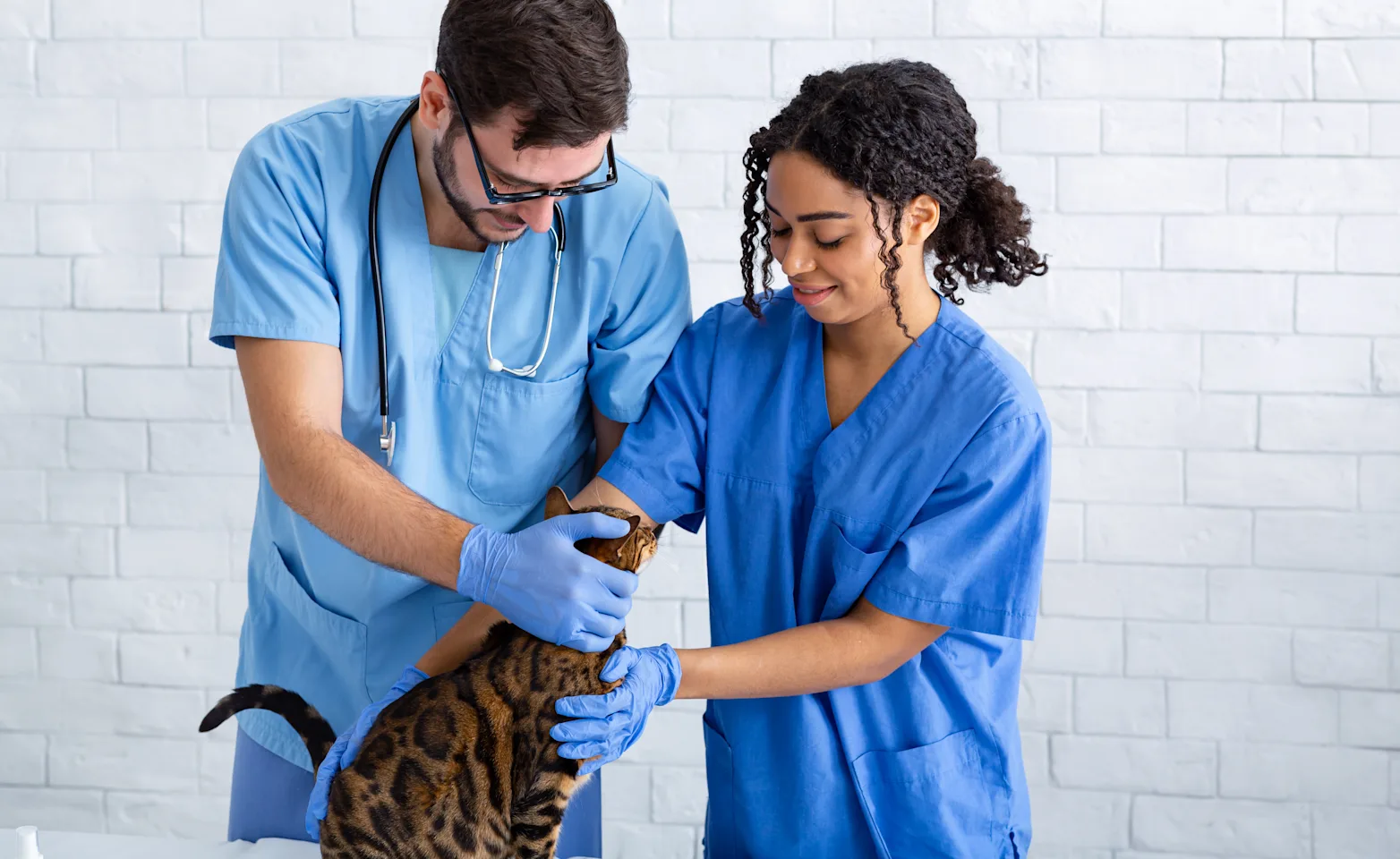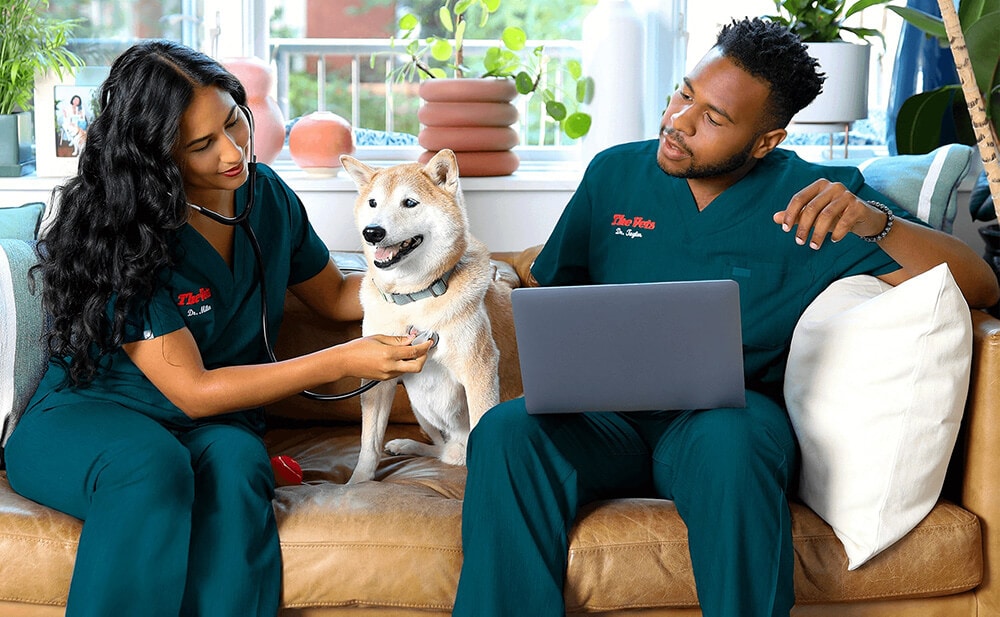Common Pet Injuries That Require an Immediate Visit to an emergency vet bellingham
Common Pet Injuries That Require an Immediate Visit to an emergency vet bellingham
Blog Article
All Concerning Veterinarian Surgical Procedure: Recognizing the Importance of Specialist Care for Your Pet dogs
Veterinary surgical treatment is a vital component of family pet healthcare. It includes various procedures, from routine elective surgical treatments to immediate interventions. Understanding the complexities of these surgeries can assist pet dog owners make informed decisions. The prep work, execution, and recovery stages are necessary for making sure the wellness of pets. With appropriate understanding, owners can navigate the intricacies of veterinary treatment. What variables should be taken into consideration before a pet dog undertakes surgical procedure?
Kinds of Vet Surgeries
When a pet dog requires medical intervention, recognizing the different kinds of veterinarian surgeries can aid pet proprietors make educated choices. Veterinary surgical procedures can be extensively categorized into three main kinds: optional, urgent, and emergency surgical procedures. Optional surgical procedures, such as spaying or neutering, are prepared treatments that are not right away dangerous. Immediate surgical treatments, like those for foreign body elimination, must be executed soon but are not life-threatening in the minute. Emergency surgical treatments, such as those resolving serious trauma or internal bleeding, are vital and call for instant attention.Additionally, surgeries can vary in intricacy, varying from minimally intrusive laparoscopic treatments to more extensive open surgical procedures. Each sort of surgery lugs its own dangers and healing processes. Recognizing these classifications allows animal owners to participate in meaningful conversations with vets, bring about much better outcomes for their cherished animals.
Preparing for Your Family pet's Surgery
Preparing for an animal's surgical treatment entails an extensive checklist to ensure all essentials are covered. Effective communication with the veterinarian is crucial for comprehending the treatment and any needed pre-operative steps - tplo surgery. In addition, having clear post-operative care instructions will assist owners give the most effective support for their recuperating animals
Pre-Surgery List Essentials
Ensuring a smooth medical experience for a family pet calls for cautious prep work and focus to information. A pre-surgery list is vital for family pet proprietors to adhere to. First, validating the arranged surgical treatment day and time is vital. Proprietors need to likewise verify that their pet dog has actually not eaten according to the veterinarian's directions, commonly for 8-12 hours prior to surgical treatment. Collecting necessary clinical records, including inoculation background, is necessary for the veterinarian's testimonial. It is likewise a good idea to prepare a comfortable room in your home for the pet dog's recuperation after surgical procedure. Proprietors ought to have a strategy for transportation to and from the vet facility, making certain that the pet dog is safe and secure and comfortable throughout the journey. Adhering to these steps can greatly enhance the surgical experience.
Connecting With Your Veterinarian

Efficient interaction with the veterinarian is essential for a successful surgical experience for family pets. Proprietors should be prepared to discuss their pet dog's medical background, including any pre-existing conditions, medicines, and allergic reactions. This details helps the vet analyze dangers and customize the medical strategy accordingly. Additionally, pet dog proprietors must ask concerns pertaining to the treatment, anesthesia, and anticipated results to guarantee they completely recognize the procedure. Clearing up any kind of questions can alleviate stress and anxiety for both the animal and the proprietor. It is likewise important to communicate any type of behavioral changes or problems observed in the family pet leading up to the surgical procedure. Ultimately, clear dialogue cultivates trust fund and cooperation, guaranteeing that family pets get the finest possible care throughout their medical journey.
Post-Operative Treatment Recommendations
After discussing the surgery with the veterinarian, animal owners must focus on post-operative care instructions to assist in a smooth recovery for their pet dogs. These directions usually consist of keeping an eye on the surgical site for signs of infection, such as redness or discharge. Pet dogs may require to be kept one's cool and restricted to avoid too much motion that might interfere with recovery. Pain monitoring is essential, so owners should follow the vet's guidance on providing medicines. Additionally, dietary limitations may be advised to avoid intestinal trouble. Routine follow-up visits are essential to guarantee appropriate recovery and deal with any issues. By sticking to these post-operative care directions, animal owners can greatly add to their animal's recovery and general wellness.
The Surgery Explained
The surgery for pets incorporates crucial actions that assure their safety and security and healing. Pre-surgery prep work are necessary for lessening dangers, while post-operative treatment guidelines play a vital role in promoting healing. Understanding these parts aids pet dog owners navigate the surgical experience extra efficiently.
Pre-Surgery Preparations
Before a pet dog undergoes surgical treatment, numerous essential prep work should occur to guarantee a safe and successful procedure. First, a complete veterinary examination is necessary to evaluate the family pet's overall wellness and identify any type of prospective risks. This might include blood examinations, imaging, or various other diagnostics. The veterinarian will certainly also discuss anesthesia alternatives customized to the family pet's details requirements. In addition, family pet owners are commonly instructed to keep food and water for a defined time prior to surgical treatment additional info to minimize the risk of difficulties during anesthetic. It's essential for proprietors to offer a total clinical history, including any type of medicines or allergic reactions, making certain the medical team has all essential info. Correct interaction and adherence to pre-surgery standards can greatly enhance the outcome of the procedure.
Post-Operative Treatment Guidelines
Correct post-operative treatment is necessary for ensuring a family pet's recuperation following surgical procedure. After the procedure, pet dogs ought to be kept track of carefully for any kind of indicators of difficulties, such as extreme blood loss, swelling, or uncommon habits. It is important to follow the vet's guidelines concerning medications, consisting of painkiller and anti-biotics. Pets should be maintained in a peaceful, comfy atmosphere to decrease stress and advertise healing. Limiting task is essential; short, leashed strolls may be needed, however leaping or running ought to be stayed clear of. Regular follow-up consultations should be arranged to analyze the healing process. Additionally, the medical website should be kept tidy and dry, with any type of indications of infection reported to a veterinarian quickly. Sticking to these standards enhances healing results.
Anesthesia and Discomfort Management
Reliable anesthesia and discomfort monitoring are crucial elements of vet surgery, making sure that pets continue to be comfortable and safe throughout the treatment. Vets examine each pet's private demands, taking into consideration aspects such as age, weight, health and wellness status, and the type of surgery being performed.Anesthesia protocols normally include a combination of pre-anesthetic drugs, induction agents, and inhalant anesthetics, enabling specific control over the pet's level of awareness. Surveillance throughout surgical treatment is crucial; veterinarians continually observe crucial indications to deal with any type of potential problems promptly.Pain management approaches may involve opioids, non-steroidal anti-inflammatory drugs (NSAIDs), and anesthetics, tailored to the pet dog's specific circumstance. This multifaceted approach assists minimize pain and promotes a smoother surgical experience. By focusing on reliable anesthesia and discomfort administration, vet experts boost the overall well-being of family pets going through operations, guaranteeing they obtain the greatest standard of care.
Post-Operative Care and Recuperation
Complying with surgical procedure, the focus shifts to post-operative treatment and recovery, which is necessary for ensuring a family pet's risk-free go back to typical activities. During this period, animals need a quiet, comfortable environment to aid recovery. Owners ought to carefully monitor their animals for any veterinary clinics type of indications of discomfort or unusual behavior.Veterinary guidelines usually consist of details instructions connected to medicine administration, wound treatment, and nutritional changes. It is crucial to stick to these suggestions to lessen difficulties and advertise healing. Animals may require to be restricted from strenuous activities, such as running or jumping, throughout their recuperation period (24 hour vet bellingham).Regular follow-up visits with the veterinarian enable tracking of the pet dog's progression and prompt modifications to the care strategy. Giving psychological support and friendship can also improve a pet dog's healing experience, assisting to ease tension and anxiousness. Overall, thorough post-operative treatment plays a substantial role in attaining a successful recovery
Recognizing Issues After Surgery
Just how can pet dog proprietors identify difficulties after surgical procedure? Understanding of certain indicators is vital for ensuring the wellness of pets throughout healing. Common signs include too much swelling, redness, or discharge at the surgical site, which may symbolize infection. Furthermore, consistent pain, shown by yawping or hesitation to move, should motivate instant interest. Modifications in hunger or water intake can also show difficulties; a decline in these actions may indicate discomfort or distress.Moreover, animal owners must monitor their pets for any type of unusual habits, such as lethargy or problem breathing, as these can be indications of serious problems. Throwing up or looseness of the bowels complying with surgical treatment might need urgent veterinary evaluation. Acknowledging these problems early can substantially affect a family pet's healing procedure, emphasizing the significance of vigilance and timely interaction with a vet for any concerning symptoms.
The Function of Veterinary Experts in Surgical Treatment
Veterinary professionals play a necessary role in making certain the safety and security and success of procedures for animals, especially adhering to surgical treatment when keeping track of and care are vital. These professionals include veterinarians, vet specialists, and support staff, every one additional info of whom add specialized skills to the medical process.Before surgical procedure, vets perform comprehensive examinations to evaluate the family pet's health, guaranteeing that any kind of underlying conditions are managed. Throughout the treatment, the surgical team provides anesthetic, keeps clean and sterile atmospheres, and checks vital indicators, all important for reducing risks.Post-operative care is just as significant; veterinary professionals observe for complications, handle pain, and guide owners on recovery techniques. Their proficiency enables them to recognize early indications of distress or infection, guaranteeing timely treatment. Inevitably, the collaborative initiatives of veterinary professionals in medical care promote a risk-free atmosphere, advertising the health of pet dogs throughout the medical journey.

Frequently Asked Inquiries
Exactly how Do I Select the Right Veterinary Doctor for My Pet?
Selecting the right veterinary doctor includes researching certifications, reading evaluations, and examining the center's environment. It is vital to review the doctor's experience with particular procedures and their interaction design when making a decision.
What Prevail Misconceptions Regarding Vet Surgeries?
Typical false impressions about veterinarian surgical treatments include beliefs that they are constantly dangerous, unneeded, or for emergencies. Several family pet proprietors undervalue the advantages of preventative treatments and the skill involved in vet medical treatment.
Just How Much Will My Animal's Surgical treatment Price?
The cost of a family pet's surgical treatment can differ considerably based on variables such as the kind of treatment, the vet's experience, and geographic area (canine tplo surgery). Normally, expenditures range from a couple of hundred to a number of thousand bucks

Can My Animal Eat Before Surgical Treatment?
Before surgical procedure, it is generally advised that pet dogs avoid consuming for a specific duration. This fasting helps in reducing the risk of complications during anesthetic. Owners must consult their vet for specific directions customized to their family pet's needs.
What if My Pet Dog Has Pre-Existing Health And Wellness Issues?
When a pet dog has pre-existing wellness conditions, it's essential for the vet to evaluate these variables before surgical procedure. This analysis assurances suitable precautions are taken, reducing risks and maximizing the pet dog's general safety and security during the procedure.
Report this page